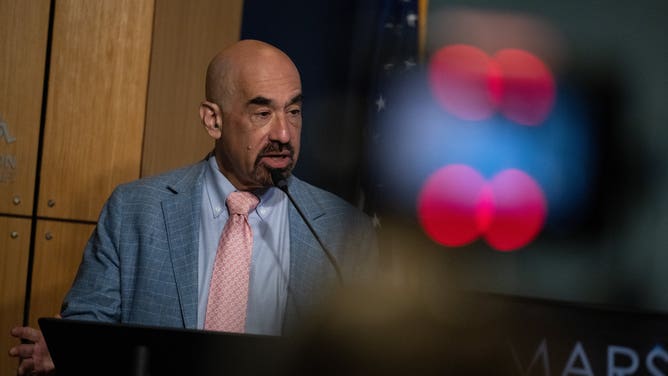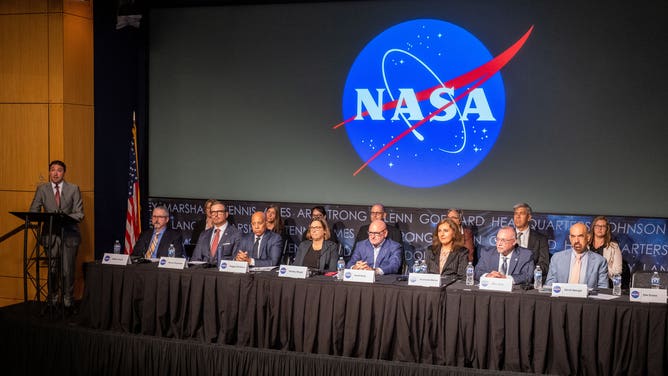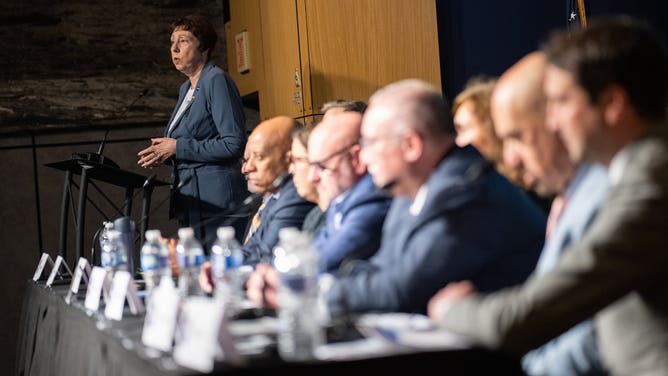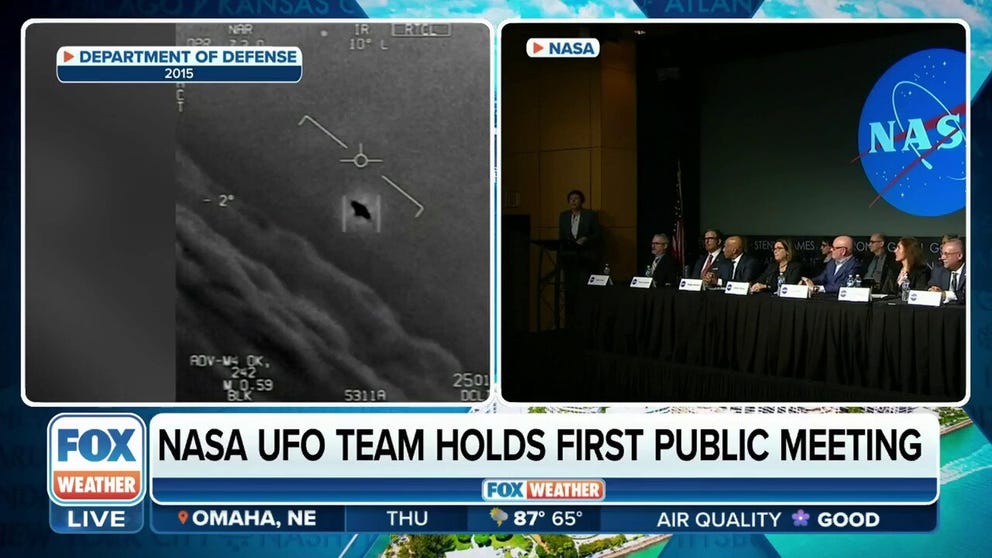'Absolutely no convincing evidence' of extraterrestrial life, NASA says during meeting about UFOs
NASA’s Unidentified Anomalous Phenomena (UAP) independent study team of 16 members will release their report to the public in late July.
NASA holds hearing on UFOs
A NASA panel charged with developing a process to investigate Unidentified Aerial Phenomenon held a public hearing Wednesday.
Some of the world's leading scientists handpicked by NASA held their first public meeting Wednesday in advance of their Unidentified Anomalous Phenomena (UAP) report to be released in late July.
The independent study team is composed of 16 experts from the scientific, aeronautics and data analytics communities. Led by astrophysicist David Spergel, the committee has the primary objective of putting together recommendations and a roadmap for NASA on how to study UAP.
According to NASA, the final report will not be a review of previous UAP incidents. Rather, it will be forward-looking, informing NASA on what possible data could be collected in the future and how it can be collected to shed light on UAP.

David Spergel, chair of NASA's independent study on unidentified anomalous phenomena and President of the Simons Foundation, speaks during a public meeting of NASA’s unidentified anomalous phenomena (UAP) independent study team, Wednesday, May 31, 2023 at the Mary W. Jackson NASA Headquarters building in Washington, D.C.
(Joel Kowsky / NASA)
The committee addressed another concern regarding UAP – extraterrestrial lifeforms. However, NASA stressed their stance on the issue during the meeting on Wednesday.
"I want to emphasize this loud and proud that there is absolutely no convincing evidence for extraterrestrial life associated with UAPs," said Dan Evans, assistant deputy associate administrator within NASA’s Science Mission Directorate and NASA official responsible for orchestrating the study.
Evans made the distinction between the study of UAP and the search for other life in the universe.
"The study of UAP is truly a distinct undertaking in its own right," he noted. "It has its own goals, its own methodologies, and that's primarily concerned with identifying the nature and origin of UAP, not necessarily connecting that with the search for extraterrestrial life."

Daniel Evans, assistant deputy associate administrator for Research in NASA's Science Mission Directorate, left, gives opening remarks are seen during a public meeting of NASA’s unidentified anomalous phenomena (UAP) independent study team, Wednesday, May 31, 2023 at the Mary W. Jackson NASA Headquarters building in Washington, D.C.
(Joel Kowsky / NASA)
UFO SIGHTINGS TO BE STUDIED BY FORMER ASTRONAUT, HANDPICKED NASA GROUP
The committee noted that they only used unclassified data in their research. Doing so was done to make their findings and collaborations as public and as widespread as possible, opening up opportunities for collaboration.
NASA believes studying UAP is essential for both air safety and national security. According to Evans, one of the primary goals of the study is to enhance situational awareness, as the presence of UAP raises concerns about the safety of the skies.
The agency noted that one of the challenges they face is the current lack of high-quality observations of UAP. This limitation makes verifying a sighting and determining what's behind it nearly impossible.

Nicola Fox, associate administrator for NASA's Science Mission Directorate, speaks during a public meeting of NASA’s unidentified anomalous phenomena (UAP) independent study team, Wednesday, May 31, 2023 at the Mary W. Jackson NASA Headquarters building in Washington, D.C.
(Joel Kowsky / NASA)
They also noted the use of the term "UAP" versus the more well-known "UFO" and "unidentified aerial phenomena."
Evans noted that transitioning the language to "UAP" was done in part to help remove the stigma associated with studying UFOS. Additionally, using the term "anomalous" rather than "aerial" was done to expand their search beyond purely airspace and include near space and undersea phenomena, as well.
"It’s now our collective responsibility to investigate these occurrences with the rigorous scientific scrutiny that they deserve," Evans said.
The report will be available to NASA and the public in late July.
